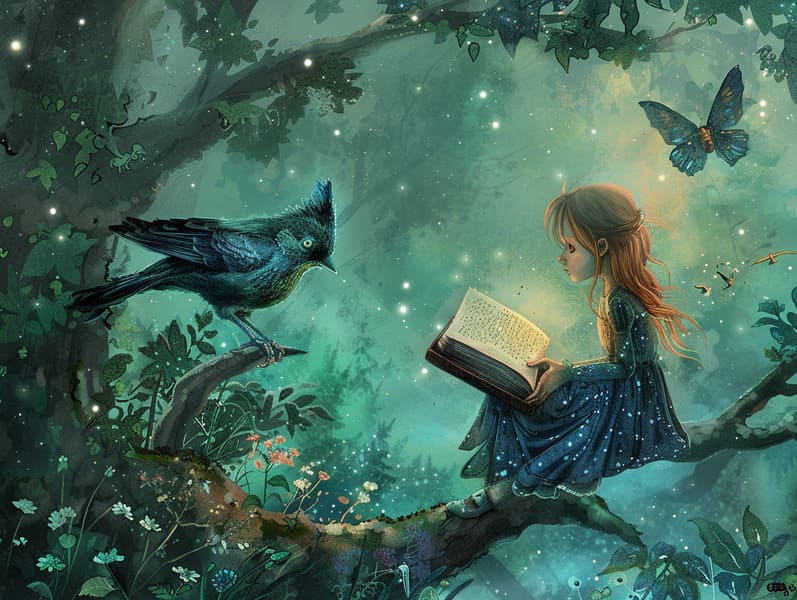Tracing the Heritage of Classic Fairy Tales with the Endless Grace.
Tracing the Heritage of Classic Fairy Tales with the Endless Grace.
Blog Article

Historical fairy tales have historical significance. These narratives have been recounted from one generation to the next far before they were ever inscribed. They originated from a variety of cultures, including African traditions. They were initially narrated among grown-ups, often carrying themes and messages related to the societal norms and beliefs of the time.
The Brothers Grimm, Jacob and Wilhelm Grimm, were among the first to assemble many of these beloved narratives. Their published works, "Grimm's Story Collection," included classics like "The Little Glass Slipper," "Hansel and Grethel," and "Snow-White and Rose-Red," which have since become hallmarks in the world of beloved fairy tales. Similarly, the Danish author's enchanting fairy tales, such as "The Mermaid," and "The Ugly Duckling," have won hearts worldwide, ensuring their place in the pantheon of famous fairy tales.
Despite being ancient, these tales remain as important as ever, especially as bedtime stories for kids. These delightful tales are now available in multiple formats, including artistically illustrated books, charming animations, and web-based fairy tales.
Their enduring popularity can be traced to several delightful features:
Life Lessons: Traditional fairy tales often present important moral lessons. Fairy tales like "The Tale of the Boy Who Cried Wolf" teach the importance of being truthful, while "The Hare and the Tortoise" highlight the qualities of steadfastness and unassuming nature. These tales offer young ones clear distinctions between right and wrong, shaping their moral compass in a mild yet important way.
Empathy and Awareness: Fairy tales frequently illustrate personalities facing problems and hurdles, inciting audiences to sympathize with their struggles and back their triumphs. For instance, "Beauty's Beast" highlights the necessity of appreciating inner worth to acknowledge the true nature of a character, cultivating warmth and comprehension.
Cultural Insights: Many fairy tales are infused with the cultural contexts from which they sprang. Exploring these stories can provide fascinating glimpses into different societies, encouraging a sense of world insight and discernment.
Creativity and Imagination: The fanciful elements in old fairy tales—mythical entities—promote children’s creative thoughts. These narratives lead readers to fantastical realms, generating inventive dreams and a sense of excitement that continues a lifetime.
Timeless fairy tales are not only charming but also instructive. They work as mesmerizing tools in advancing various cognitive and affective skills in young ones. When classic fairy tales are told out loud, they improve language development by introducing new language items and detailed sentence structures. This practice also improves hearing abilities and focus, as young readers follow the story, eager to see what happens next.
Furthermore, analyzing the themes and characters of traditional fairy tales can promote evaluative skills and critical thinking. Children are taught to discover patterns, forecast, and make sense of cause and effect. These reflections also facilitate young readers reveal their thoughts and feelings, promoting their emotional intelligence.
In today’s modern era, the existence of digital fairy tales has made these tales more acquirable than ever. Online resources and mobile apps extend huge assortments of timeless fairy tales that can be seen or listened through anytime, anywhere. Fairy tales narrated are particularly in demand, featuring an interactive method for young ones to delight in these fascinating tales. Narrated books and read-out-loud videos move characters and settings to life, often complemented by charming harmonies and instrumentals that boost the find it here story journey.
The timeless allure of timeless fairy tales lies in their ability to transform to current eras while sustaining their central values. Contemporary revisions of these tales often feature more representative figures and modern settings, making them relatable to today’s audience. However, the central morals of boldness, kindheartedness, and rightness remain unchanged, continuing to connect with listeners of all ages.
Old fairy tales also offer a sense of comfort and predictability. They grant a systematic narrative with a straightforward beginning, middle, and end, often winding up with the resolution of conflicts and the triumph of truth over falsehood. This constancy can be calming for little ones, rendering a sense of solidity in an fluid world.
Ancient fairy tales continue to enthrall and guide new generations, maintaining their majesty and relevance in modern society. As children's bedtime stories, they afford a perfect blend of delight and instruction, backing moral values, empathy, and creativity. The existence of internet fairy tales and the sought after status of fairy tales told out loud ensure that these ancient stories remain acquirable to new generations.
By sustaining and disseminating these narratives, we continue to revere the rich tapestry of inventiveness and cultural heritage. Whether you are exploring a gorgeously illustrated book, experiencing a web-based library, or listening to an audiobook, the delight of Grimm's fairy tales is always within reach. These fairy tales emphasize of the lasting power of fairy tales and its ability to hold us together across time and space.
Even if you are viewing a vividly illustrated book, accessing a online library, or listening through an narrated book, the charm of classic fairy tales is always within reach.
These fairy tales highlight of the lasting presence of tales and its ability to gather us across epochs and places, establishing a link that enchants and educates alike.